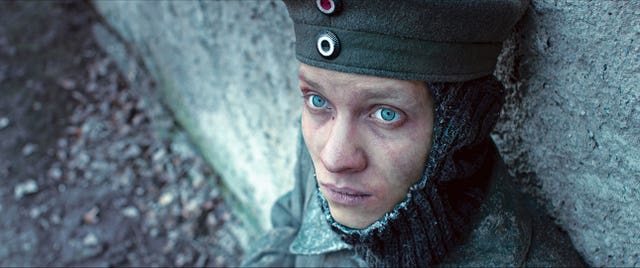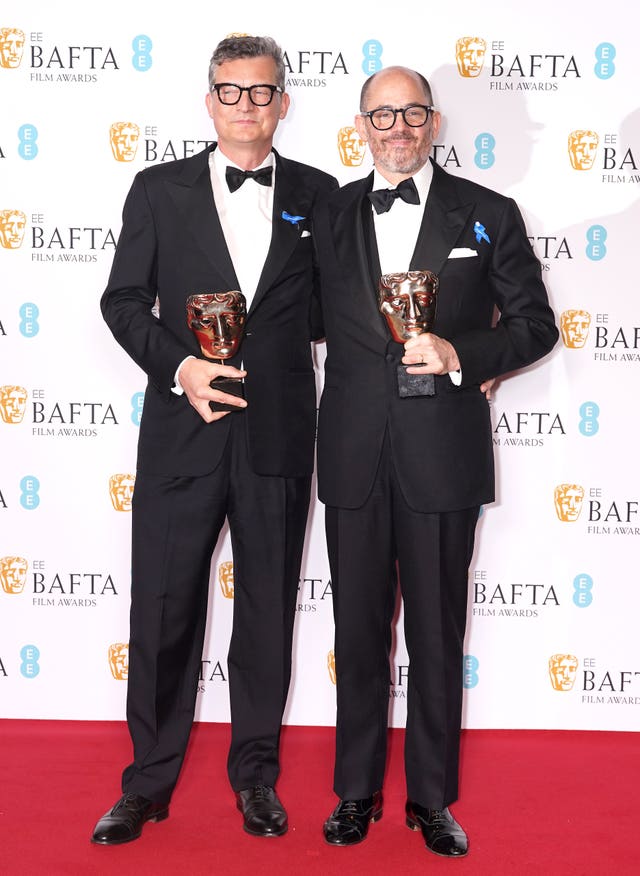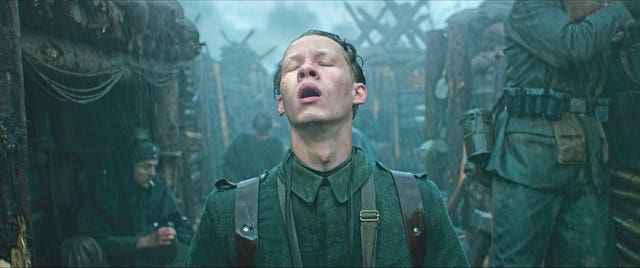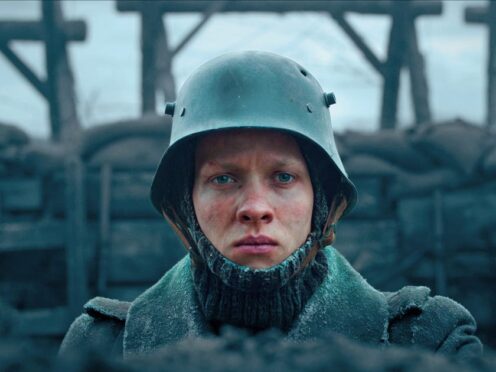Award-winning war epic All Quiet On The Western Front was a mammoth undertaking, involving more than a decade of planning and the involvement of a five-time world champion triathlete.
Based on the 1929 novel of the same name, the film tells the story of a young German soldier on the Western Front in the First World War .
Producers Edward Berger and Malte Grunert said they had sought to be “meticulous” with their planning and preparation in order to maintain the film’s authenticity and a German “sensibility”.
While filming, the pair sought to create an environment that accurately captured both the physical and psychological effects of war on soldiers in the trenches.

The movie triumphed on Sunday, with a total of seven wins including best picture overall, breaking the record for a foreign language film with the highest number of Baftas.
All Quiet On The Western Front was serialised in a newspaper in 1928 and published as a book the following year.
Rights to the novel for screen adaptation were secured 15 years ago by Scottish-born athlete and filmmaker Lesley Paterson and producer Ian Stokell.
Three years ago the pair enlisted the help of German producers Berger and Grunert to bring the project to life.
Grunert said the original book – which remains the best-selling German novel of all time – had “always been important” to him, having first read it as a teenager.
He said that the production had been a “one-off-opportunity” that had to be “approached with respect”.
“That was a responsibility that I was honoured to take on and which I wanted to do justice to,” he said.
“I didn’t want to let this opportunity pass me by, the opportunity to tackle the first German-language adaptation of this unique piece.”
Berger said that the original screenplay he received from Paterson and Stokell for All Quiet On The Western Front had been “very good” but needed more of a German perspective.
“Given they are British, I needed to make it have more of a German sensibility,” he said.
“It was important to me to get the material closer to me and to make a German movie out of it, in a way that is only possible if you grew up in Germany.”
Shooting for the film was long and “extremely strenuous”, with the high-quality production budget provided by backers Netflix used to create an authentic no-man’s land, including barbed wire, bomb craters, animal carcasses and the corpses.

Grunert and Berger highlighted the importance of making the film as authentic as possible, with advice sought from historical experts, and checks and cross-references done on characters to maintain accuracy.
“We were meticulous. It didn’t necessarily make life easier for us, but it is an important reference. If you decide to do something correctly, there is only one right way,” Grunert said.
All Quiet On The Western Front boasts a cast of well-respected German actors including Albrecht Schuch and Daniel Bruhl although the lead of Paul Baumer is played by a newcomer, 25-year-old Felix Kammerer.
“We built a battlefield. Moving around this battlefield during filming was psychologically testing, challenging and depressing,” Grunert said.
“Not to mention, it was cold and wet and muddy. We had built a set that would physically demand everything from everyone.”
Filming took place in March and April, with inhospitable temperatures, frozen mud and snow.

“It started to thaw as we began filming, and in no time at all we were moving around a mud bath. You could only walk on certain bits,” Grunert said.
“When we wrapped up at the end of May last year, we went home absolutely exhausted but happy. Despite all the exertion, for me, it was extraordinarily satisfying work.”
The success of 2023’s All Quiet On The Western Front follows on from previous adaptations.
The novel was first adapted as a movie in English in 1930 by Lewis Milestone, which went on to win the Oscars for best picture and best director.
Some 50 years later, a second adaptation, made for US television by Delbert Mann, won best television movie at the Golden Globes.
